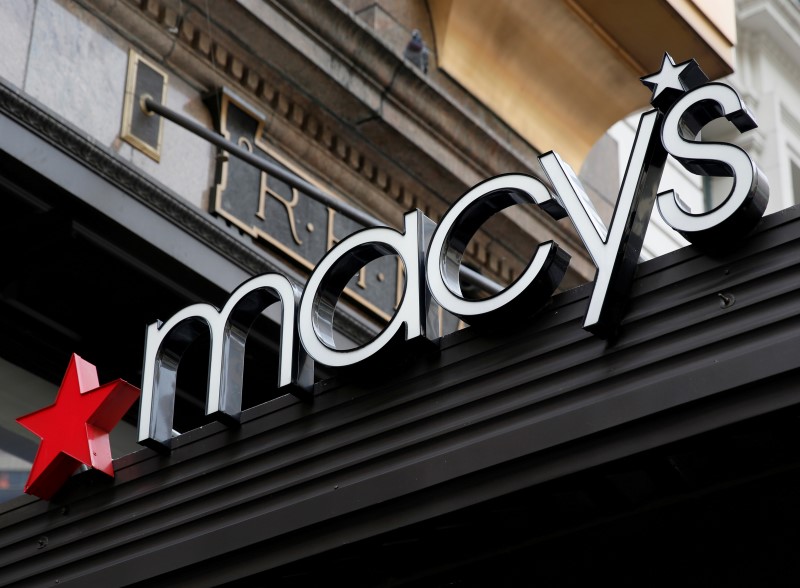By Caroline Valetkevitch
NEW YORK (Reuters) - Some of the best deals at big retailers like Macy's, Staples and Gap are not in their stores but on the stock market: their dividends are through the roof.
After a Wall Street selloff hit shares of stores that turned in weak earnings for the latest quarter, the companies are sporting yields at historically high levels.
For example, Staples (O:SPLS) pays a dividend equal to about 6 percent of the company's $8.15 share price, an all-time high for the company and more than double its 10-year average dividend yield of 2.5 percent.
Others are up there as well. Kohl's (N:KSS) now sports a dividend yield of 5.7 percent, more than triple its 10-year average; Gap's (N:GPS) is 5.3 percent and Macy's (N:M) is paying out 4.9 percent.
At a time when 10-year Treasury bonds are yielding just 1.9 percent and the broader S&P 500 about 2.2 percent, those fat payouts may attract income investors.
But experts warn that unusually high dividend yields can be a trap, and retailers more typically are seen as cyclical stocks with below-average yields.
"There could be good plays" in retail, but not every high payout stock is a good buy, said Neil Hennessy, chief investment officer at Hennessy Funds, which has about $6.5 billion in assets. "If you have a stock price come down and the yield go up, then it's time to look at what's your cash position, what's your debt, what's going on."
Weak first-quarter results for some retailers have raised fresh fears about their ability to compete with Amazon (O:AMZN) and other online sellers.
If share prices don't improve, the only way to normalize their high yields is for companies to cut their dividends.
Nonetheless, some investors think the leap is worthwhile. Charles Sizemore, who focuses on dividend stocks as chief investment officer of Sizemore Capital Management in Dallas, said he owns and is bullish on shares of Wal-Mart (N:WMT) and Target (N:TGT), both yielding roughly 3 percent and with histories of raising their dividends.
He said he would shy away from smaller specialty retailers. "Retail is volatile because consumer tastes change, and the entire sector is undergoing a structural change because of e-commerce."
Still, he doesn't think retailers in general are at risk of having to slash their dividends like many energy companies have been forced to do. They are still making enough money to cover their dividends, and that wasn't the case with the most stressed oil companies in recent months.
Some retailers look to be skirting dangerous territory when their net income is compared to their dividends, a measure called the dividend-coverage ratio. Staples, with a ratio of 1, would have to spend every dollar of net income just to pay its dividend.
Kohl's is at 1.3 and Gap is at 1.9. Macy's is slightly higher, at 2.1, Thomson Reuters data shows. The average coverage ratio for S&P 500 companies is about 2.2, said Howard Silverblatt, analyst at S&P Dow Jones Indices.
Companies with ratios below 1 are the ones to watch because it may mean they are paying a dividend they can't afford, he said. Coach (N:COH), for example, has a coverage ratio just under 1, as does Abercrombie & Fitch Co (N:ANF).
Many high-yield retailers have solid balance sheets, even if their earnings are weak, said Sizemore. "If anything, they would be raising their dividends, because they have nothing else to do with their cash."
